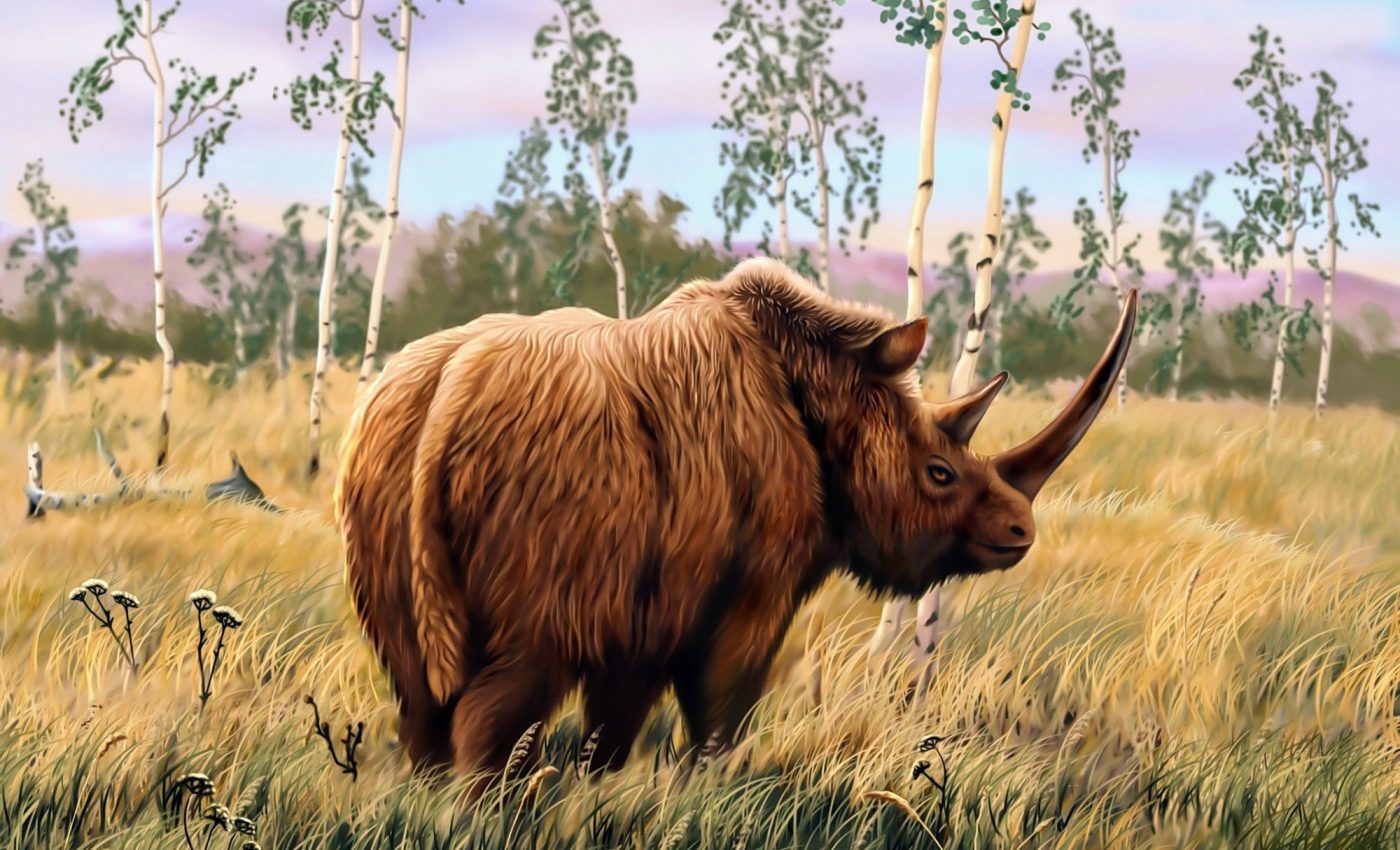
Humans hunted the woolly rhinoceros to extinction
We’ve all heard the story of the woolly mammoth – the giant, furry elephant-like creature that roamed the icy plains of the Ice Age. But what about its less famous cousin, the woolly rhinoceros?
These massive, shaggy beasts once shared the same frigid landscape, but their story has often been overshadowed. New research is shining a light on the fate of these prehistoric giants and the potential role humans played in their extinction.
Woolly rhinoceros (Coelodonta antiquitatis)
The woolly rhinoceros was a large, herbivorous mammal that roamed the mammoth steppes of northern and central Eurasia during the Ice Age. These creatures were characterized by their thick, shaggy fur, which helped them survive in the cold climates.
They had two large horns on their snout, with the front horn reaching up to three feet in length. Woolly rhinos had robust bodies, short legs, and a hump on their shoulders formed by a thick layer of fat, which provided insulation and energy reserves.
Woolly rhinoceroses lived in open grasslands and tundras, feeding on grasses, shrubs, and other vegetation. They were well adapted to their environment, using their horns to clear snow and access the plants beneath.
These magnificent animals lived alongside other Ice Age giants like mammoths and saber-toothed cats, until their extinction around 10,000 years ago.
New look at woolly rhinoceros mystery
Scientists have long puzzled over the demise of the woolly rhinoceros. Did they succumb to the changing climate at the end of the Ice Age, or did something else contribute to their disappearance? A recent study offers a fascinating new perspective.
Using a combination of computer models, fossil records, and ancient DNA analysis, researchers were able to trace the population history of the woolly rhinoceros over an astonishing 52,000 years.
What they discovered was surprising: it wasn’t just climate change that led to the woolly rhino’s demise, but also the persistent hunting pressure from humans.
“This showed that from 30,000 years ago, a combination of cooling temperatures and lowbut sustained hunting by humans caused the woolly rhinoceros to contract its distribution southward, trapping it in a scattering of isolated and rapidly deteriorating habitats at the end of the Last Ice Age,” explained Professor Damien Fordham from the University of Adelaide Environment Institute.
The human factor
This discovery challenges previous research that suggested humans had no role in the extinction of the woolly rhinoceros.
It’s a reminder that even small amounts of hunting pressure over a long period can have a significant impact on animal populations, especially when combined with other stressors like climate change.
“As Earth thawed and temperatures rose, populations of woolly rhinoceros were unable to colonise important new habitats opening up in the north of Eurasia, causing them to destabilise and crash, bringing about their extinction,” said Professor Fordham.
This isn’t just an ancient history lesson. It’s a stark warning for the present day. We’re currently experiencing a similar environmental crisis, with many large animal populations being pushed into smaller and less suitable habitats due to human activities.
The same fate that befell the woolly rhinoceros could await many of our modern-day megafauna if we don’t take action.
Lessons from the past
The study’s findings have important implications for conservation efforts today. The research highlights the need to consider the combined effects of climate change and human pressure when developing strategies to protect endangered species.
“By studying past extinctions, we can provide valuable lessons for safeguarding Earth’s remaining large animals,” said Professor David Nogues-Bravo, a co-author of the study.
In particular, the plight of the woolly rhinoceros highlights the importance of protecting large herbivores. These animals play a crucial role in their ecosystems, and their loss can have cascading effects on other species.
For example, the grazing of large herbivores helps to maintain healthy grasslands, which in turn support a wide range of other wildlife.
A call to action
The story of the woolly rhinoceros is a cautionary tale, but it’s also a story of hope. By understanding the mistakes of the past, we can chart a better course for the future. We have the power to make a difference, to protect the incredible biodiversity of our planet. But we need to act now, before it’s too late.
The woolly rhinoceros may be gone, but its legacy lives on. We can honor its memory by working to protect the other amazing creatures that share our planet. It’s a responsibility we owe to them, to ourselves, and to future generations.
“This understanding is crucial for developing conservation strategies to protect currently threatened species, like vulnerable rhinos in Africa and Asia,” said Professor Nogues-Bravo.
The study is published in the journal Proceedings of the National Academy of Sciences.
—–
Like what you read? Subscribe to our newsletter for engaging articles, exclusive content, and the latest updates.
Check us out on EarthSnap, a free app brought to you by Eric Ralls and Earth.com.
—–













